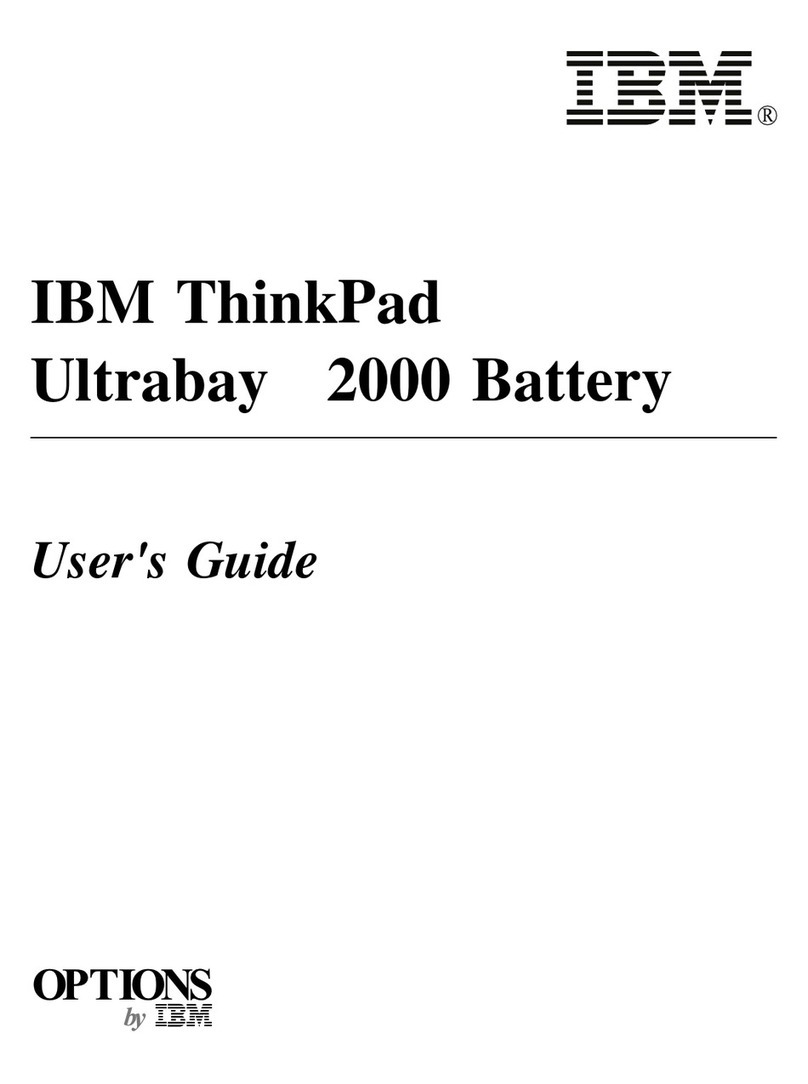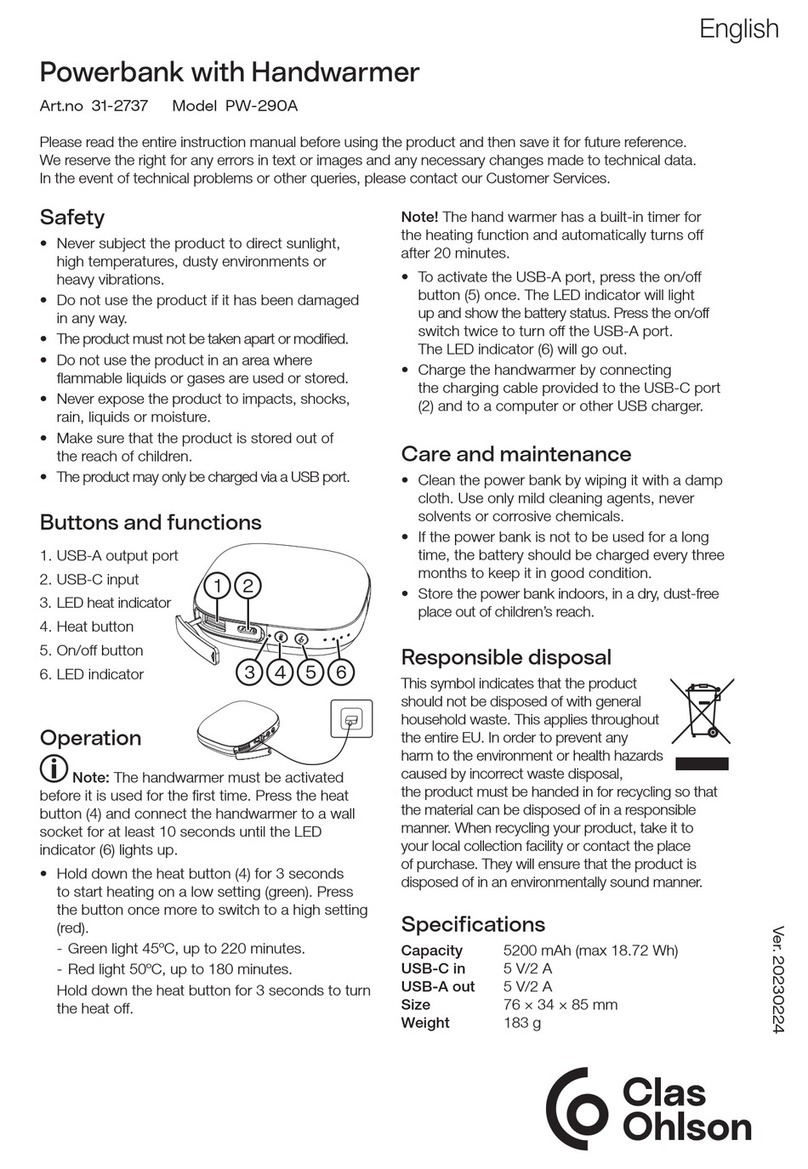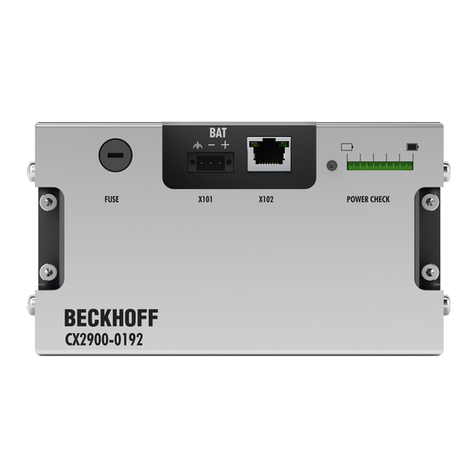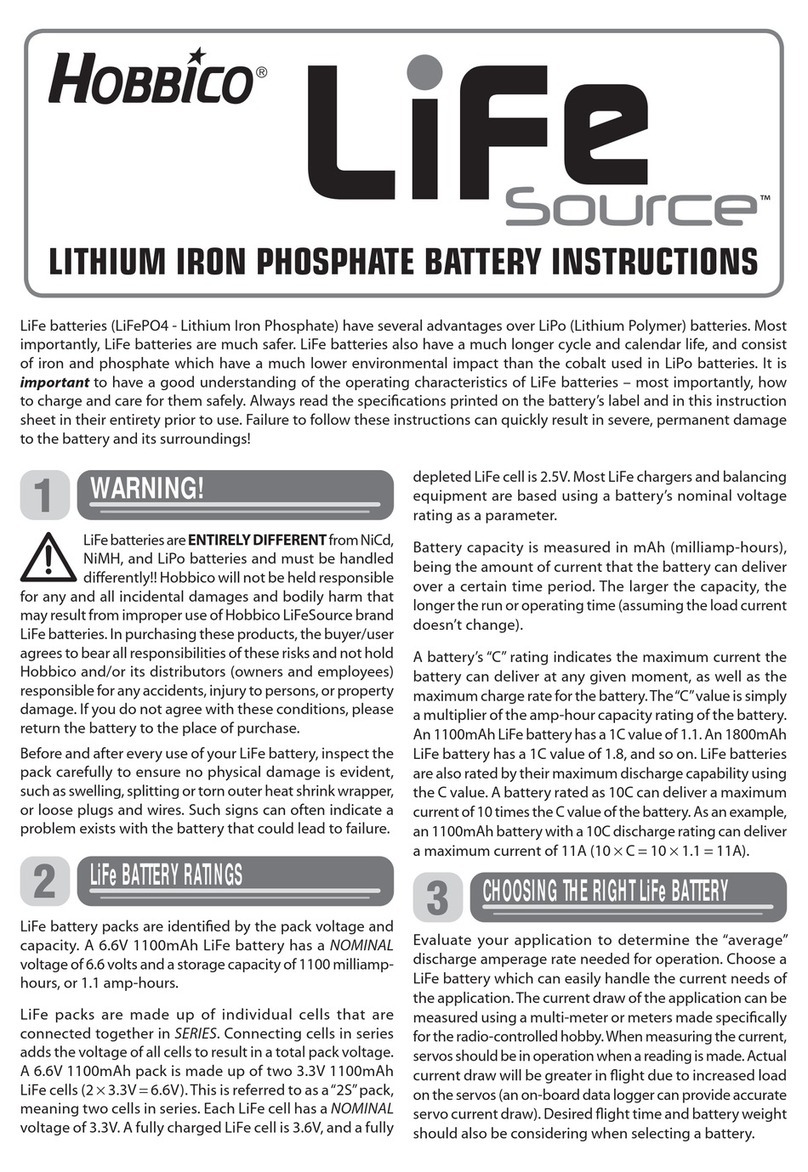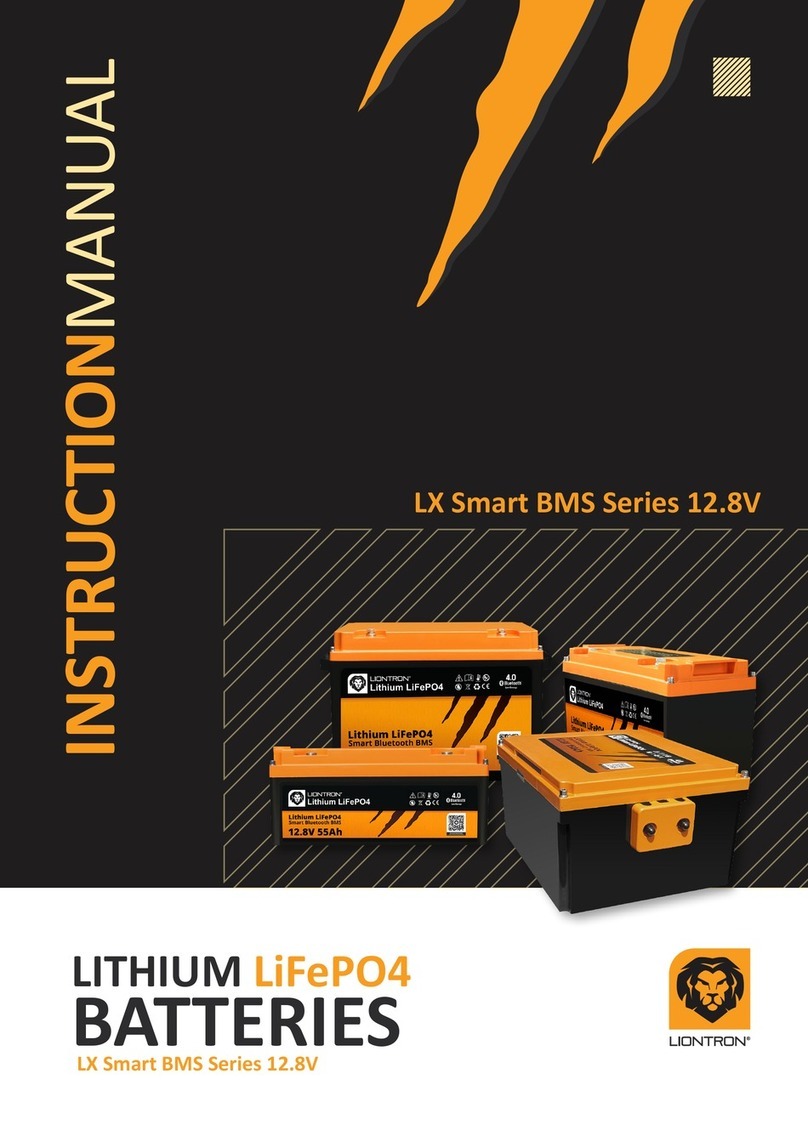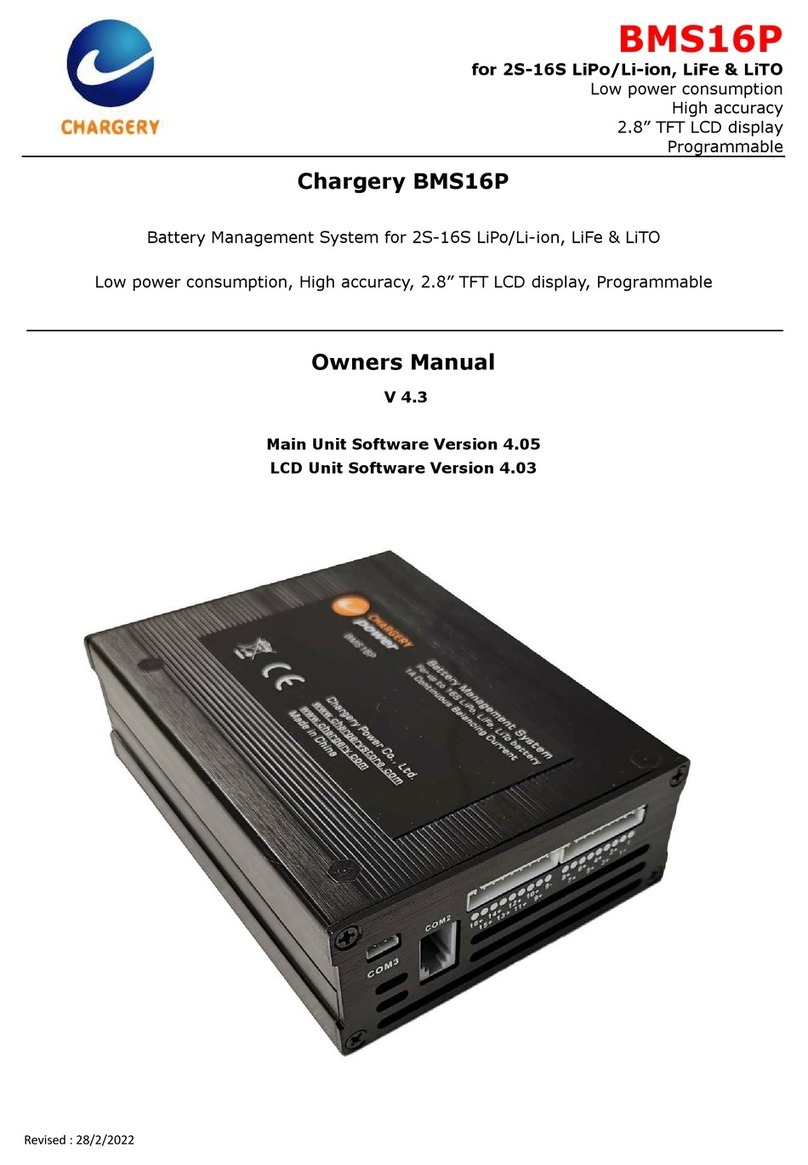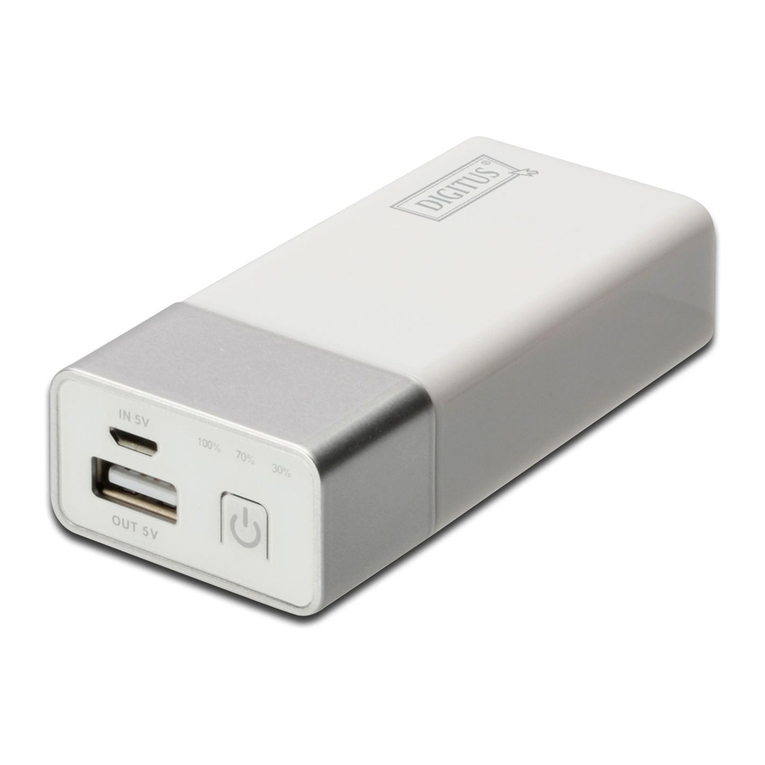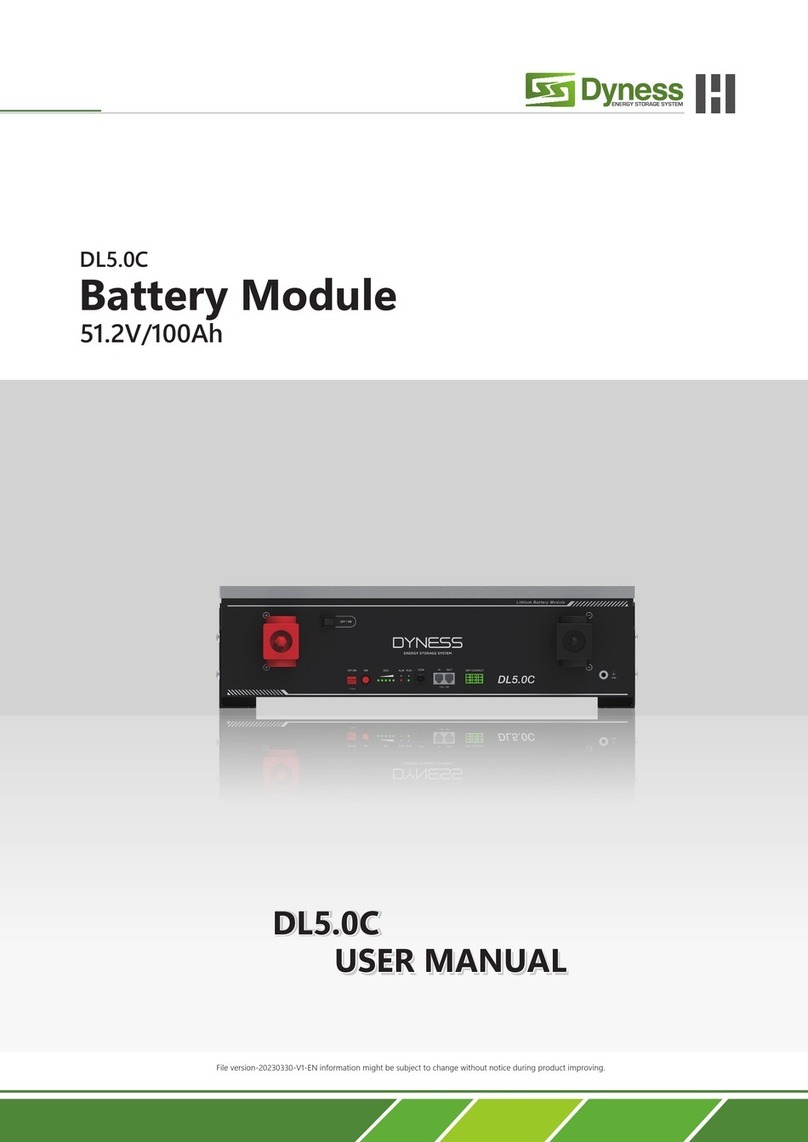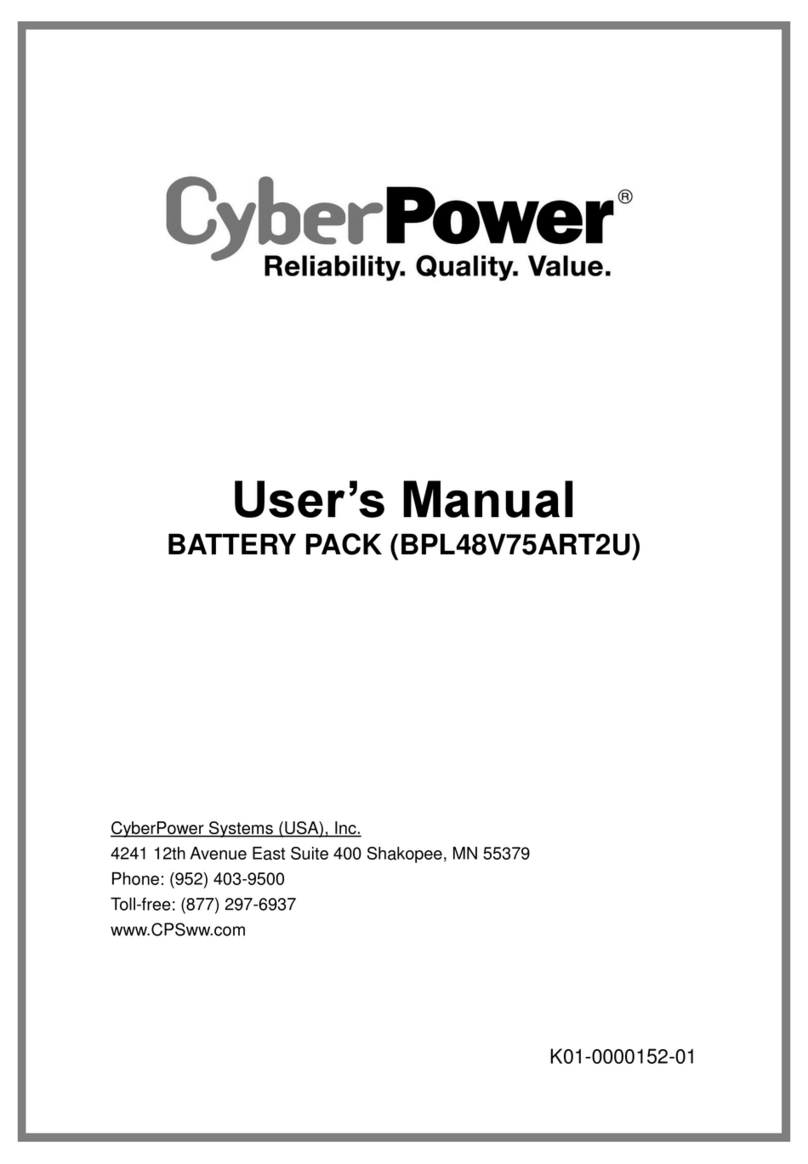Linear ANALOG DEVICES DC2732A-A User manual

Looking for a discount?
Check out our current promotions!
This coversheet was created by Verical, a division of Arrow Electronics, Inc. (“Verical”). The attached document was created by the part supplier,
not Verical, and is provided strictly 'as is.' Verical, its subsidiaries, affiliates, employees, and agents make no representations or warranties
regarding the attached document and disclaim any liability for the consequences of relying on the information therein. All referenced brands,
product names, service names, and trademarks are the property of their respective owners.
00000005981LF-000
EOS Power
Buy Now
We have 45,000 LP502030-PCM-NTC-LD-A02554 - EEMB - Lithium Battery Rectangular 3.7V 250mAh Rechargeable in
stock now. Starting at $0.034. This EEMB part is fully warrantied and traceable.
1-855-837-4225
Give us a call
International: 1-555-555-5555 1-415-281-3866
1-415-281-3866
Arrow Electronics,
Verical Division
P.O. Box 740970
Los Angeles, CA 90074-0970
Arrow Electronics, Inc
9201 East Dry Creek Road
Centennial, CO 80112
DC2732A-A
ANALOG DEVICES
Buy Now

1
DEMO MANUAL DC2732A
Rev. 0
DESCRIPTION
LTC2949
Battery Stack Monitor
The DC2732A demonstrates a high voltage battery pack
monitor based on the LTC
®
2949. The LTC2949 is a high
precision current, voltage, temperature, charge and
energy meter for electrical and hybrid vehicles and other
isolated current sense applications. It infers charge and
energy flowing in and out of the battery pack by simulta-
neously monitoring the voltage across two sense resis-
tors and the battery pack voltage.
Due to its compatible protocol, the LTC2949 can share the
same communication bus with ADI battery stack monitors
that contain the isoSPI™ interface.
The LTC2949 is typically powered from an isolated sup-
ply and directly connected to the battery stack on the low
or high side depending on the shunt position. Resistive
high voltage dividers provide connections to high voltage
terminals that need to be supervised.
Design files for this circuit board are available.
All registered trademarks and trademarks are the property of their respective owners. Protected
by U.S. patents, including Patents 8908779, 9182428, 92701.
BOARD PHOTO

2
DEMO MANUAL DC2732A
Rev. 0
TABLE OF CONTENTS
Description.................................................. 1
Board Photo................................................. 1
Performance Summary ................................... 3
Hardware Setup ............................................ 4
Hardware Description ..................................... 5
Jumper Functions .....................................................5
Connector Functions.................................................6
Connector J3 Pin Assignment...................................7
Pin Functions............................................................7
Solder Jumpers and Other Functions........................8
Hardware Setup Examples ............................... 9
Option 1: Nonisolated SPI Setup...............................9
Option 2: Isolated isoSPI DC2617 Setup................. 10
Option 3: Isolated isoSPI DC1941 Setup................. 11
Option 4: Isolated isoSPI DC2792 Setup................. 12
Option 5: Isolated Reversible isoSPI DC2792,
DC2350 Setup ........................................................ 13
Connecting a High Voltage Battery ......................... 14
Software Setup Overview................................15
Arduino IDE Setup .................................................. 15
LTC2949 Windows GUI Usage ..........................18
LTC2949 GUI Setup ................................................ 18
Operation Control ................................................... 19
Multimeters ............................................................21
Plots/Data Collection ..............................................22
Plot Zoom Fit ..........................................................23
Plot Pan, Zoom, Labels...........................................23
Change Thresholds On-The-Fly............................... 24
Plot Trackers...........................................................25
Export Plot Data .....................................................25
Plot Time Axis ........................................................25
Register Map ..........................................................25
Edit Register Values................................................25
Register Context Menu ...........................................26
Display Format Selection ........................................26
Register Map Tooltips.............................................28
Register Details ......................................................28
Auto Read Menu .....................................................28
Tools Menu .............................................................29
Basic Operation Example........................................29
Appendix A:Usage of SPI Isolator Instead of isoSPI ....32
Appendix B: CAN Based Evaluation ....................33
Hardware Requirements .........................................33
Software Requirements..........................................33
Setup the Hardware ................................................33
DC2732A_CAN: LTC2949 CAN Firmware ...............34
CAN Messages Overview........................................34
Basic Operation Examples ......................................40
Current, Power, BAT (100ms).................................40
I1, P1, BAT (100ms), I2fast, BATFast (1ms to 2ms)...... 40
I1, P1, BAT (100ms), I2fast, BATFast (average 10ms)...41
Additional Operation Examples...............................43
Usage of RAWRW...................................................43
Fast Measurement ..................................................46
Serial Monitor via Linduino’s USB Port...................49
Convert .DBF to .DBC File ....................................... 51
Resistive Divider Equation ......................................52
Definitions ..............................................................52
Appendix C:Isolation Measurement with LTC2949 ...52
Case I: Switch M1 Open..........................................53
Case II: Switch M1 Closed ......................................53
Combine Equations of Both Cases..........................53
Calculate YISO– from Case II:..................................54
Simulation with Switch Leakage Error....................54
Appendix D: Measure Hall Sensor with
DC2732A_Basic ...........................................54
Appendix E: Synchronous Measurements with
Cell Monitors and LTC2949 .............................56
Appendix F: GUI Troubleshooting & Linduino
Programming..............................................62
Appendix G: Log Measurements with Tera Term.....66
Log Measurement Data from DC2732A_BASIC to
TEXT/.CSV –File .....................................................66
Appendix H: LTC2949.CPP/.H Basic Library Functions.. 69

3
DEMO MANUAL DC2732A
Rev. 0
SYMBOL PARAMETER CONDITIONS MIN TYP MAX UNITS
Isolated Supply (Flyback LT8301)
|VGND-LGND| Isolation Working Voltage 800 V
VCC Input Supply Voltage l5.0 12.0 V
5.0 32.0 V
IVCC Input Supply Current Sleep (Note 1)
Standby (Note 1)
10
25
mA
mA
VUVLO+Under Voltage Lockout Rising (Note 2) 4.2 V
VUVLO–Under Voltage Lockout Falling (Note 2) 3.1 V
VOUT Output Voltage JP11 = 5.3
JP11 = 12.4
JP11 = 9.0
5.3
12.4
9.0
V
V
V
Nonisolated ADVCC Supply, VCC = 0V/JP9 = Dis
ADVCC Input Supply Voltage l4.5 14.5 V
IADVCC Input Supply Current Sleep (Note 1), ADVCC = 12V
Standby (Note 1), ADVCC = 12V
10
25
mA
mA
isoSPI Interface J1, J2, ISO+/ISO–
|VGND-LGND| Isolation Working Voltage 800 V
RTERM Differential Bus Termination Resistance 100 Ω
Operation Mode Indication LEDs
D2 Sleep LED LTC2949 Core Sleep Red
D3 Active LED LTC2949 Core Standby/Measure Green
NTC Temperature Sensor NTCG164KF104FT/TDK
R1 Shunt Temperature Resistor Resistance at 25°C 100k Ω
R2 Board Temperature Resistor
A, B, C Steinhart-Hart Parameters
1
T
=A+B•InRNTC +C•(InRNTC)3
A = 9.85013754e-4
B = 1.95569870e-4
C = 7.69918797e-8
Current Sense Resistor (Note 3)
Manufacturer: Isabellenhuette
Tolerance of Nominal Resistance: 5%,
Temperature Range of Given TC: 20°C–60°C
Manufacturer Part Number
BAS-M-R0001-R-5.0 DC2732A-B: 50e–6Ω, RTHI = 1.5K/W, TC = 100 ppm/K, P140°C = 20W (I140°C ≈ 630A)
BAS-M-R00005-AEU-5.0 DC2732A-A: 100e–6Ω, RTHI = 2.0K/W, TC = 50 ppm/K, P140°C = 15W (I140°C ≈ 380A)
BAS-M-R0002-R-5.0 DC2732A-C: 200e–6Ω, RTHI = 3.0K/W, TC = 50 ppm/K, P140°C = 10W (I140°C ≈ 220A)
Note 1: The sleep current does not reflect the sleep current of LTC2949, which is in the µA range. The DC2732A uses the LT8301 isolated flyback
converter, that requires a minimum load current for stable regulation. To maintain this minimum load and to have some visual feedback on operation
mode of LTC2949, the DC2732A has a red LED that indicates sleep and a green LED that indicates standby/measure state.
Note 2: The undervoltage lockout is calculated according to LT8301’s data sheet and the nominal resistance values of R16 (R1), R23 (R2).
Note 3: All given specifications of the current sense resistor are from Isabellenhuette’s data sheet of the BAS series precision and power resistors.
Note 4: When evaluating the current measurement accuracy of the DC2732A the shunt resistance must be calibrated. Also the remaining temperature
dependency of the resistance (TC) can be calibrated. To allow precise temperature measurement of the current sense resistor, the DC2732A contains an
NTC (R1) placed close to the shunt with good thermal connection (also electrically connected to one pad of the shunt).
PERFORMANCE SUMMARY
The ldenotes the specifications which apply over the full operating temperature
range (–40°C to 125°C), otherwise specifications are at TA= 25°C. The test conditions are VCC = 12.0V, JP11 set to 12.4V operation,
unless otherwise noted. JP4–JP6 set to isoSPI, unless otherwise noted.

4
DEMO MANUAL DC2732A
Rev. 0
HARDWARE SETUP
VIN(UVLO+)=1.242V •(R1+R2)
R2 +2.5µA •R
1
VIN(UVLO−)=1.228V •(R1+R2)
R2
R1 = 430e3; R2 = 270e3; UVLOP = 1.242 • (R1 + R2)/R2 + 2.5E-06 • R1;
UVLON = 1.228 • (R1 + R2)/R2; UVLON, UVLOP (3.18, 4.30)
Figure1. Undervoltage Lockout Calculation for LT8301 According to the Schematic of DC2732A
The DC2732A can be setup for different applications.
The power supply and communication interface can be
a nonisolated connection via J4 or the individual turrets
IOVCC, MISO, MOSI, SCK, CS, ADVCC, GND. An isolated
connection is possible using the onboard flyback con-
verter LT8301 sourced by VCC, LGND and using the isoSPI
communication via J1, J2 or iso+, iso–test points. If not
needed, the onboard power supply can be left unpowered,
or be disabled by connecting the enable signal to LGND
(put jumper JP9 to DIS). If not using the onboard power
supply, any external (also isolated) power supply can be
connected to ADVCC and GND (e.g., Analog Devices inte-
grated isolated DC-to-DC converters – isoPower).
The communication mode (SPI or isoSPI) must be set
using jumpers JP3–JP6. In case J4 is directly connected
to a Linduino
®
, it provides 7V and JP3–JP6 must be set
to SPI operation.
The Hardware Description section gives more details
about different hardware setup options. In most cases,
the DC2732A is operated together with a DC2026, which
is referred to as a Linduino.

6
DEMO MANUAL DC2732A
Rev. 0
JUMPER FUNCTIONS
JUMPER
DEFAULT
NAME DESCRIPTION
JP1 On isoSPI Term Enable/disable 100e isoSPI bus termination. If LTC2949 is the only device on the isoSPI bus or
connected on top of a cell monitor isoSPI daisy chain, the termination must be enabled. If LTC2949 is
connected in parallel to a daisy chain (LTC2949 is fed into the input of a daisy chain via J1, J2) of cell
monitors, the termination must be disabled.
JP2 EN Auto Sleep Enable/disable automatic entering of sleep state after power-up. The LTC2949 automatically returns
to sleep state if no wake-up confirmation command is received within 1 second after entering standby
state, after power-up. Wake-up confirmation can be either writing 0x00 to register 0x70 or starting of
a measurement. LTC2949 will not go automatically to sleep if SDA is pulled low (JP2 at position DIS)
during power-up. As SDA is also used for the optional external EEPROM, it must be released from GND
to allow communication to the EEPROM. In most applications, the Auto Sleep will stay enabled and the
muster will send the wake-up acknowledge. Still, for debugging purposes, this jumper may be set to DIS
to force LTC2949 to stay in standby mode.
JP3–JP6 isoSPI SPI/isoSPI Select between nonisolated SPI or isolated isoSPI communication mode. All jumpers must be either
set to the left (SPI) or the right (isoSPI) position. In case the QuikEval™ connector J4 is connected to a
Linduino, the interface must be set to SPI.
JP7, JP8 Low High/
Low Side
Select between high or low side current sensing. To avoid the sense resistor being floating, it can be
tight to either LTC2949’s GND (low side sensing) or to LTC2949’s A/DVCC (high side sensing). It is also
possible to remove both jumpers (or set JP7 to low and JP8 to high) if the shunt is applied somewhere
between LTC2949’s supply rails by external connections. See following sections for example setups.
JP9 EN PWR Enable/disable the onboard flyback converter LT8301. The isolated onboard supply can also be
disabled by disconnecting VCC, LGND or setting VCC, LGND to less than 3V (see VUVLO–).
JP10 7V ADVCC Enable (7V)/disable (off) connection of LTC2949’s A/DVCC supply input to V+of J4. If Linduino is
connected to J4, V+is supplied with 7V from a SMPS with post LDO on the Linduino. The Linduino
allows to override this voltage up to LTC2949’s max. operating voltage of 14.5V via turrets ADVCC and
GND. If JP10 is set to off, it is also possible to apply any voltage between 4.5V and 14.5V to ADVCC and
still use the Linduino connected via J4.
JP11 5.3V VOUT Onboard isolated flyback converter LT8301 output voltage selector. Select one of three (5.3V, 9.0V,
12.4V) pre-configured output voltages for the flyback converter. Higher supply voltages are useful to
take advantage of LTC2949’s GPOs being able to drive the output to one of LTC2949’s supply rails. This
allows for example to ensure sufficient gate-source voltage when using MOSFETs to switch high voltage
resistive dividers connected to LTC2949’s voltage inputs. See Hardware Setup Examples section and
LTC2949 data sheet for more details.
HARDWARE DESCRIPTION

7
DEMO MANUAL DC2732A
Rev. 0
CONNECTOR FUNCTIONS
CONNECTOR NAME DESCRIPTION
J1, J2 SPI Master, Cell
Monitors
isoSPI connectors. Pin 1 (iso–) and Pin 2 (iso+) of both connectors are connected in parallel. Thus, any of the two
connectors can be used as the interface to the isoSPI master. For clarity, they are still named differently to indicate
one connector can be used to interface to the isoSPI master and one to a cell monitor. Having two connectors
allows the DC2732A to be easily inserted into the isoSPI bus between a LTC6820 and a LTC681x/ADBMS681x cell
monitor by using two standard Ethernet cables. Physically the LTC2949 is then connected in parallel to this isoSPI
bus and the isoSPI termination resistor (see JP1) must be disabled.
J3 EXT General purpose I/O connector. Allows connection to LTC2949’s analog inputs V2 to V7, VBATP, VBATM, general
purpose I/Os V8 to V10, reference output VREF and supply voltage A/DVCC. See Pin Functions or schematic for
pinassignment.
J4 QuikEval Linduino QuikEval connector. Connect the 14-pin flat ribbon cable between this connector and Linduino for
nonisolated SPI operation. Keep in mind that the Linduino has an isolated USB interface, meaning also in this setup
the DC2732A is isolated from the PCs USB port.
Also note, that the Linduino’s default VCCIO output voltage setting (Pin 2) is 5V, whereas LTC2949’s max. IOVCC
operating voltage is 4.5V. The absolute maximum voltage for IOVCC of LTC2949 is 5V plus some safety margin
Analog Devices puts on such parameters, thus no damage will happen even with Linduino’s VCCIO tolerances. Still,
for operation within LTC2949’s specifications, it is recommended to set the jumper JP3 of the Linduino to any of
EXT, 2.5V or 3.3V. It is also allowed to remove the jumper which sets VCCIO to 1.8V. In case EXT is selected, an
external voltage of 1.8V to 4.5V must be applied to JP1 of Linduino or to test point IOVCC of DC2732A.
J5 I2CI2C test points. Allows to connect a scope or 2nd I2C master to the onboard I2C EEPROM for debugging purposes.
J6 EXTCLK External clock interface. In case the internal oscillator and the optional onboard 4MHz crystal is not used, an
external oscillator between 10kHz and 25MHz can be connected to those test points.
J7 NTC (V1) External NTC connection. The DC2732A, as default, has an onboard NTC that is connected to V1 and to IM
(negative shunt terminal). This allows a good thermal (via big copper plane) connection to the shunt for sensing its
temperature. As the NTC is put into a voltage divider between VREF and GND, it requires the shunt to be configured
for low side sensing (IM connected to GND via JP8). To allow the temperature measurement of the shunt also in
high side current sensing applications, it is possible to remove the onboard NTC R1 and connect an external, wired
NTC to J7. For tight thermal coupling the external NTC can then be clued to the shunt (electrical isolated).
If shunt temperature measurement is not required in high side sensing applications, it is not necessary to remove
the onboard NTC. Still, if leaving the NTC R1 populated, the analog input V1 can’t be used for other purposes. To
allow usage of V1 for other analog input signals, the NTC R1 and the reference resistor R3 must be removed.
J8 GPO Isolated digital interface to LTC2949’s alert signals (heart-beat signals DO4, DO5). If enabled, the heart beat
signals of LTC2949 toggle at 400kHz at normal operation. They are transferred via capacitors and the dual isolation
transformer T4 over the isolation barrier, rectified and buffered via the dual comparator LT6700. The open-drain
output signals are driven to VCC by weak 150k pull-up resistors, as long the heart beat signals are toggling. The
weak pull-up resistors allow to connect low-ohmic (e.g., 3.3k) external pull-up signals to a different I/O voltage if
required. In case of an alert (e.g., over current), the associated heart beat signals stop, and the comparator’s output
is pulled low indicating the alert on the isolated, low voltage side. See LTC2949’s data sheet for details on the heart
beat signals.
J9 Heart Beat Test points to the heart beat signals after the isolation transformer and before the rectifier. For debugging
purposesonly.
J8, J9 In addition to the alert and heart-beat signals, those connectors also allow access to the supply voltage input VCC
and LGND of the onboard flyback converter.
HARDWARE DESCRIPTION

8
DEMO MANUAL DC2732A
Rev. 0
CONNECTOR J3 PIN ASSIGNMENT
PIN NAME DESCRIPTION PIN NAME DESCRIPTION
15 GND LTC2949’s GND 16 VREF LTC2949’s 3V Reference Voltage Output
13 VBATM Negative BAT Input 14 VBATP Positive BAT Input
11 NTC2+V2 Analog Input, a 100k NTC/RREF is Connected Onboard 12 V3 Analog Input V3
9 V4 Analog Input V4 10 V5 Analog Input V5
7 V6 Analog Input V6 8 V7 Analog Input V7
5 V8_DO1 Analog Input V8/Digital Output DO3 (Note 4) 6 V9_DO2 Analog Input V9/Digital Output DO2 (Note 4)
3 V10_DO3 Analog Input V10/Digital Output DO3 (Note 4) 4 GND LTC2949’s GND
1 GND LTC2949’s GND 2 ADVCC LTC2949’s ADVCC Supply Voltage
Note 1. All dual purpose pins (GPIOs) do not have their filter capacitor populated on the PCB. This was done to not interfere with the digital output function
(including the 400kHz toggling mode) of those pins. It is recommended to assemble an input filter capacitor (C14, C19, C20) to the GPIOs that are used in
analog input only mode for best noise filter performance.
PIN FUNCTIONS
PIN/
TURRET NAME DESCRIPTION
PIN/
TURRET NAME DESCRIPTION
E1 BATP See J3 VBATP E10 VREF See J3 VREF
E2 BATM See J3 VBATM E11 ADVCC See J3 VBATP
E3 V3 See J3 V3 E12, E13 GND See J3 VBATP
E4 V4 See J3 V4 E21 MISO LTC2949’s SPI Interface (When Configured to
SPI Mode, See JP3–JP6)
E5 V5 See J3 V5 E22 MOSI
E6 V6 See J3 V6 E23 SCK
E7 V7 See J3 V7 E24 CS
E8 V8 See J3 V8_DO1
E9 D2 See J3 V9_DO2
E18 D4 Isolated, Rectified and Buffered Heart Bit Signal
V11_DO4
E17 HB4 Isolated Heart Bit Signal V11_DO4
E19 D5 Isolated, Rectified and Buffered Heart Bit Signal
V12_DO5 (Over Current Comparator Output)
E20 HB5 Isolated Heart Bit Signal V12_DO5 (Over
Current Comparator Output)
E14, E15 LGND Negative Supply Input to Onboard Isolated Flyback
Converter LT8301
E16 VCC Positive Supply Input to Onboard Isolated
Flyback Converter LT8301
Note: = Signals on the low voltage side, isolated from LTC2949
HARDWARE DESCRIPTION

9
DEMO MANUAL DC2732A
Rev. 0
SOLDER JUMPERS AND OTHER FUNCTIONS
REF PCB PICTURE DESCRIPTION
SJ1–SJ4 Normally closed solder jumpers to allow disconnection of onboard
shunt RSNS1. Those are small PCB footprints that can be cut with
a small knife. SJ1, SJ2 allow to disconnect I2P, I2M from the shunt.
SJ3, SJ4 allow to disconnect I1P, I1M from the shunt. Once a channel
is disconnected, it is possible to connect an external shunt to the test
points right below the solder jumpers.
After being cut, it is still possible to close them again by applying
some solder.
SJ5, SJ6 Normally closed solder jumpers to allow disconnection of onboard
4MHz crystal.
BYP2, IOVCC Test points to LTC2949’s IOVCC supply input and BYP2 3.3V supply
output. The BYP2 supply output can be used to load external circuits
with up to 10mA, for example to supply an external SPI isolator
like ADuM141E or ADuM4154. In such applications IOVCC can be
connected to BYP2 via those test points. See also Appendix A: Usage
of SPI Isolator Instead of isoSPI for more details.
HARDWARE DESCRIPTION
Figure3. Solder Jumpers SJ1–SJ4, Allow Separation of the Two Current Channels

10
DEMO MANUAL DC2732A
Rev. 0
The DC2732A demo board can be operated in four differ-
ent setup options.
1. Nonisolated SPI interface with DC2026 (Linduino)
Options 2 thru 5 are isolated.
2. isoSPI interface with DC2617 (CAN to isoSPI shield)
plugged on top of DC2026 (Linduino)
3. isoSPI interface with DC1941 (LTC6820 SPI to isoSPI
bridge) connected to DC2026 (Linduino)
4. isoSPI interface with DC2792 (dual LTC6820 SPI to
isoSPI bridge) connected to DC2026 (Linduino)
5. isoSPI interface parallel to a reversible daisy chain of
cell monitors (as above with DC2792, DC2026)
For option 1, the LTC2949 is supplied with 7V by
Linduino. In all other cases a 5V to 12V (or up to 32V,
HARDWARE SETUP EXAMPLES
see performance summary) supply needs to be connected
to turrets LGND and VCC on the lower left side of thedemo
board.
For option 1, the LTC2949 is galvanically connected to
the Linduino. Still, the Linduino has a galvanic isolation
to its USB port. For the other two options, the commu-
nication and supply to LTC2949 is isolated by an isoSPI
transformer and flyback converter.
Make sure to set the SPI/isoSPI selection jumpers J3–J6
to the correct position depending on the chosen option
(SPI for option 1, isoSPI for all other options).
In all setups it is possible to operate LTC2949 together
with cell monitors ADBMS68xx/LTC681X. As the DC2732A
has two RJ45 isoSPI connectors, this is especially easy
when operating in isoSPI mode, as shown in option 5.
Figure4 thru Figure6 show how DC2732A is configured
and connected with above mentioned demo circuits.
OPTION 1: NONISOLATED SPI SETUP
Figure4. Nonisolated SPI Communication and Supply via Linduino (Linduino’s USB Port is Still Isolated). Supply via Turrets VCC,
LGND is Not Necessary in This Setup; This is Also the Recommended Initial Setup when Using the GUI Software, the First Time as It
Allows Easy GUI Installation via QuikEval; After the GUI is Installed Any Other Setup Can Also Be Used

11
DEMO MANUAL DC2732A
Rev. 0
HARDWARE SETUP EXAMPLES
OPTION 2: ISOLATED ISOSPI DC2617 SETUP
Figure5. Isolated isoSPI Communication via LTC6820 on DC2617, Isolated Supply via Turrets VCC, LGND. Optional CAN Interface
via DC2617; The Linduino Sketchbook for LTC2949/DC2732A Also Contains a Software Example, that Allows Measurements Done by
LTC2949 to Be Controlled and Communicated Into a CAN Environment; See Appendix A: Usage of SPI Isolator Instead of isoSPI

15
DEMO MANUAL DC2732A
Rev. 0
CONNECTING A HIGH VOLTAGE BATTERY
Figure9. Connecting a High Voltage Battery with Resistive Divider to DC2732 for Low Side Current Sense Operation
Figure10. Connecting a High Voltage Battery with Resistive Divider to DC2732 for Low Side Current Sense Operation with Chassis-
GND Isolation Measurement; See Appendix C: Isolation Measurement With LTC2949 for Operation and Calculation Details
HARDWARE SETUP EXAMPLES

16
DEMO MANUAL DC2732A
Rev. 0
The DC2732A can be controlled by the Linduino One
(DC2026) board. The Linduino is an Arduino compatible
platform with example code that will demonstrate how to
control multicell battery stack monitor ICs and the stack
monitor LTC2949. Compared to most Arduino compatible
microcontroller boards, the Linduino offers conveniences
such as an isolated USB connection to the PC, built-in SPI
MISO line pull-up to properly interface with LTC2949’s
open-drain SDO, and an easy ribbon cable connection
for SPI communication through the DC2732A 14-pin
“QuikEval” J4 connector. Please see the Linduino web
page for more details.
Besides using the Linduino as a host controller, the
DC2732A can also operate with any other host controller,
that offers a SPI interface. Linux based evaluation, for
example using a Raspberry Pi, is also supported;please
contact Analog Devices for details.
SOFTWARE SETUP OVERVIEW
ARDUINO IDE SETUP
1. Download and install the Arduino IDE to the PC.
Detailed instructions can be found under the
quickstarttab.
2. Set the Arduino IDE to open LTC2949 Sketchbooks.
From within the Arduino IDE, click on File menu
select Preferences. Then under Sketchbook location:
select Browse and locate the path to the extracted
LinduinoSketchbook2949.zip file that was provided
by ADI.
a. If there is already a BMS Sketchbook, it can be
extracted into the same folder as the bmsSketch-
bookBeta.zip.
b.Also, if there is already a local copy of
LinduinoScketchbook2949.zip, it can be extracted
into the LTSketchbook folder.
Figure11. Arduino IDE Preferences, Sketchbook Location
Figure12. Arduino IDE, COM-Port Setting
3. Close then re-open the Arduino IDE to enable the use
of the Sketchbook Location that was previously set.
4. Select the correct COM port to allow communication
to Linduino through USB. Under the Tools menu,
select Port →Select the highest number COMxx with
the “√" check mark symbol. There may be more than
one option;Linduino is usually the highest COM port
number. The PC screenshots used in this example
show the Linduino connected to COM6. To identify
the right COM port, unplug the USB cable and check
which port disappears from the Tools/Port menu.

17
DEMO MANUAL DC2732A
Rev. 0
SOFTWARE SETUP OVERVIEW
5. Select the correct Arduino compatible microcontroller board. Under the Tools menu, select Board →Arduino/
Genuino Uno with the “•” black dot symbol.
Figure13. Arduino IDE, Board Setting
6. Open one of the programs, called “Sketches,” associated with the DC2732A. In this example DC2732A_BASIC
Sketch will be opened. Under the File menu, select Sketchbook →Part Number →2000 →2900 →2949 →
DC2732A_BASIC.
Figure14. Arduino IDE, Sketchbooks for LTC2949/DC2732A

18
DEMO MANUAL DC2732A
Rev. 0
SOFTWARE SETUP OVERVIEW
7. Upload the DC2732A_BASIC Sketch onto the Linduino by clicking on the Upload button on the top left corner. When
this process is completed there will be a “Done Uploading” message on the bottom left corner.
Figure15. Arduino IDE, Sketchbook Upload
Figure16. Arduino IDE, Serial Monitor
8. Open the Arduino Serial Monitor tool. Click on the Serial Monitor button on the top right corner then the Serial
Monitor window will open and show on the top left corner the COMxx used.
9. Configure the Serial Monitor to allow communication to the Linduino through USB. On the bottom of the Serial
Monitor window, set the following starting from bottom left to bottom right.
a. Enable “Autoscroll”
b. Select Both NL and CR on the left dropdown menu.
c. Select 1000000 baud on the right dropdown menu (see Serial.begin within DC2732A_BASIC.ino for the
baud-ratesetting).
Note: In case Arduino DUE is used, the max. supported baud rate is 250000.
d. As shown in Figure17, when configured correctly the DC2732A_BASIC Sketch will start to output measurement data.
Figure17. Arduino IDE, Serial Monitor Output of DC2732A_BASIC Sketch

19
DEMO MANUAL DC2732A
Rev. 0
SOFTWARE SETUP OVERVIEW
LTC2949 GUI SETUP
Various features of the DC2732A can be demonstrated
by using Analog Devices’ QuikEval Software. QuikEval is
a USB-based product demonstration and data acquisi-
tion software meant to be used in conjunction with the
Linduino programmed with the DC590B Sketch (factory
default) that connects to individual daughter cards for
specific Analog Devices products.
Connect the Linduino to a PC using the USB cable pro-
vided with the Linduino. Now, connect the Linduino to
the DC2732A configured to SPI mode, see Hardware
Setupsection.
Once setup is complete (also wait for Windows installing
the drivers after Linduino is connected the first time to
The DC2732A software user interface was designed to
allow users to quickly evaluate the LTC2949. The user has
the ability to plot/monitor voltage, current, power, charge
and energy, and fully access LTC2949’s register map
to make any configuration. Also, operation of LTC2949
together with ADBMS68xx/LTC681x cell monitors e.g., to
do synchronous measurements of cell voltage and battery
stack current is supported.
Once the graphical user interface (GUI) is started, the user
can connect to the LTC2949 via Linduino and the GUI will
initially read out all the register values from the LTC2949.
Figure18. GUI: Connect Device
the PC), run the QuikEval Software. QuikEval should auto-
detect the DC2732A and check if the LTC2949 GUI is already
installed. QuikEval will automatically download and install
the GUI if necessary and launch it. Once the LTC2949 GUI
is installed, QuikEval is not necessary anymore and the
GUI can be opened directly from the Windows Start Menu
(named LTC2949). In case the DC2732A is operated in
isoSPI mode in which the Linduino is not connected via
the 14-pin ribbon cable directly to DC2732A but to some
isoSPI demo board (DC1941, DC2792, DC2617), QuikEval
is unable to detect the DC2732A as it will only read the
identification EEPROM on the isoSPI demo board and
thus try to launch other GUIs that are not compatible with
LTC2949. Still, if the LTC2949 is opened directly from the
Windows start menu it will operate normally (QuikEval
should be closed before opening the LTC2949GUI).
LTC2949 WINDOWS GUI USAGE
After the connection is established, most typical basic
operation steps are:
1. Starting continuous conversion.
2. Enabling Register Auto Read (data transfer from
device to PC).
3. Clearing device’s accumulators and trackers and
GUI’splots.
The LTC2949 GUI is split into several sub-windows that
can be rearranged and even detached from the main win-
dow by dragging the title, moving around and dropping to
a new position. Some sub-windows are hidden and can be
shown by enabling them in the View menu. All this allows
Table of contents




